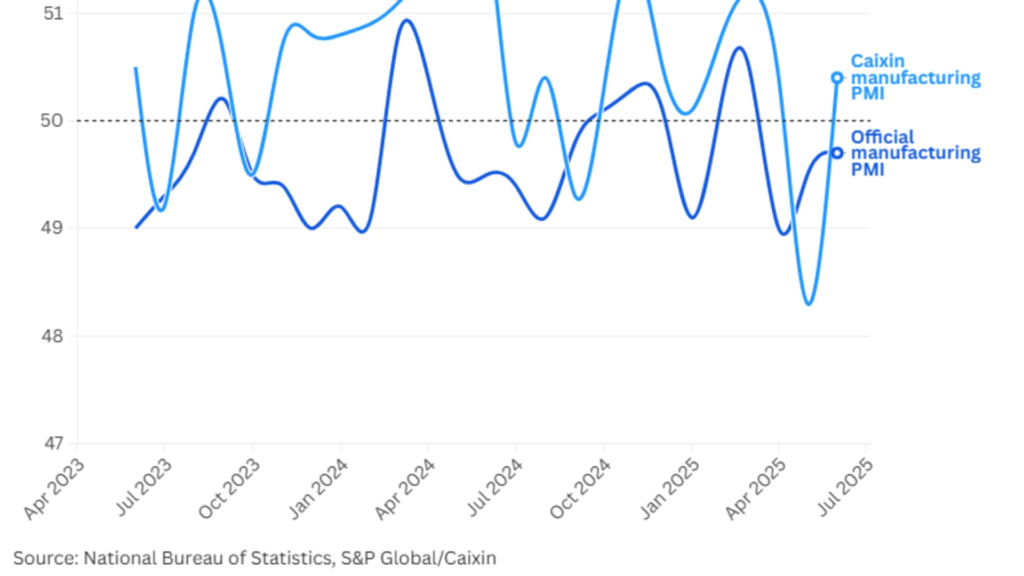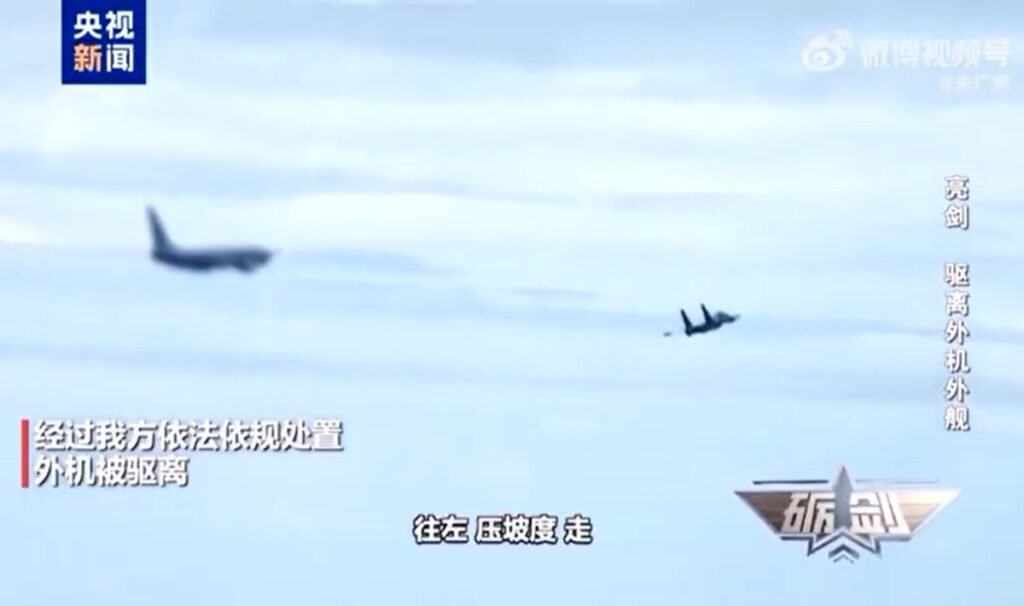Tuesday, July 1, 2025

As global markets experience a surge, with major indices such as the S&P 500 and Nasdaq Composite hitting all-time highs, investor optimism is on the rise. This is largely driven by the easing of trade tensions between the United States and China, as well as favorable government policies in Asia. These developments have created a propitious environment for high-growth tech stocks, especially in China, Taiwan, and South Korea. Companies like Dongguan Aohai Technology, Taiwan Semiconductor Manufacturing Company (TSMC), and Samsung Electronics have become increasingly attractive to investors seeking opportunities that align with positive economic momentum. These countries’ strategic policies are laying the foundation for continued growth in the tech sector, which is poised to leave a lasting impact on global markets.
China: Innovation and Growth Powered by Government Support
China has firmly established itself as a key player in the global tech sector, with significant government backing fueling the rise of domestic tech companies such as Dongguan Aohai Technology. The Chinese government has implemented several initiatives designed to stimulate technological innovation and bolster the development of its domestic industries. Among the most notable policies is the 2025 Action Plan for Stabilizing Foreign Investment, which aims to enhance the country’s competitiveness by improving the business environment, reducing market barriers, and increasing opportunities for foreign investments.
Dongguan Aohai Technology, a manufacturer of precision components for consumer electronics, is well-positioned to capitalize on these favorable policies. With its extensive experience in research and development (R&D) and its position as a supplier to major global brands, the company is poised for significant growth. As China continues to expand its role in the global tech supply chain, the government’s supportive measures are expected to create ample opportunities for businesses like Dongguan Aohai Technology, further enhancing its prospects in the global market.
Taiwan: Semiconductor Dominance and Strategic Government Support
Taiwan, renowned for its leadership in semiconductor manufacturing, continues to be a major hub for global tech innovation. Taiwan Semiconductor Manufacturing Company (TSMC), the world’s largest semiconductor foundry, plays a pivotal role in the global tech supply chain. The company is responsible for producing chips that power the devices of major tech companies, such as Apple, Nvidia, and Qualcomm. Taiwan’s government has long recognized the strategic importance of the semiconductor industry, implementing policies that offer financial incentives and R&D support to help the sector grow and remain competitive on the global stage.
TSMC’s role in the global semiconductor market has become even more critical in recent years, with the rise of technologies such as artificial intelligence (AI), the Internet of Things (IoT), and autonomous vehicles. Taiwan’s focus on fostering innovation and strengthening its semiconductor capabilities ensures that TSMC will continue to thrive. The country’s government-backed initiatives, such as infrastructure development and increased investments in R&D, ensure Taiwan remains a central player in the global economy and an attractive destination for investors looking to tap into the growth of the semiconductor sector.
South Korea: Samsung Electronics and the Future of Tech Innovation
South Korea, home to tech giant Samsung Electronics, is another major player in the high-growth tech sector. Samsung has consistently led in the fields of consumer electronics, smartphones, semiconductors, and displays. The company’s innovations continue to drive its success, with products ranging from cutting-edge smartphones to memory chips that are integral to the operation of modern electronics. The South Korean government has been instrumental in supporting the growth of its tech sector, particularly through policies that foster R&D and increase competitiveness.
South Korea’s government has also made significant investments in emerging technologies such as 5G, artificial intelligence, and renewable energy. These initiatives aim to ensure the long-term growth and global competitiveness of the country’s tech sector. Samsung, as a cornerstone of South Korea’s economy, benefits directly from these government measures, further solidifying its global position. The combination of South Korea’s strategic focus on technology and innovation, backed by government support, ensures that the country will remain a major player in the global tech market.
Government Policies and Their Impact on Global Tourism
The tech growth in China, Taiwan, and South Korea is not only influencing the tech sector but is also having a significant impact on global tourism. As these countries continue to develop and innovate, the tourism sector is reaping the benefits of new government policies aimed at improving the travel experience and attracting international visitors.
In China, the government has introduced measures to promote inbound tourism, such as visa exemptions and streamlined travel services. These initiatives have been particularly effective in stimulating travel, with China seeing a sharp increase in international visitors. In 2024, inbound tourism in China grew by over 60%, reflecting the success of these policies. Additionally, technological advancements such as AI-powered travel services and the development of high-speed rail systems have further improved the tourism experience.
Similarly, Taiwan has leveraged its technological prowess to enhance its tourism infrastructure. The country’s focus on innovation has led to the development of smart transportation systems, which improve the travel experience for visitors. South Korea, known for its tech-powered tourism, has also benefited from its strong tech sector. The integration of technology into tourism services, such as digital ticketing and AI concierge services, has made South Korea an increasingly popular destination for international tourists.
The Symbiotic Relationship Between Tech and Tourism
The growing tech industries in China, Taiwan, and South Korea are having a profound effect on the global tourism sector. The integration of advanced technologies in transportation, accommodations, and travel services has significantly enhanced the overall travel experience. As governments in these countries continue to support the development of both tech and tourism infrastructure, they create a dynamic environment for investors to explore both sectors.
For example, in China, the introduction of “silver trains” equipped with medical and age-related services is specifically aimed at encouraging the aging population to travel, which in turn stimulates consumption in the tourism sector. Taiwan’s use of AI and other technologies to improve transportation systems and travel services has enhanced its appeal to tourists. In South Korea, the country’s smart city initiatives and tech-driven tourism services are setting new standards for modern travel, offering seamless and efficient experiences for tourists.
These advancements create a win-win situation for both the tech and tourism industries. As technology continues to drive innovation, these countries’ ability to attract international tourists while simultaneously nurturing their tech sectors positions them as attractive options for investors seeking growth opportunities in both industries.
Conclusion: A Dynamic Investment Landscape in Asia
Investing in high-growth tech stocks across China, Taiwan, and South Korea offers significant potential for long-term returns. Companies like Dongguan Aohai Technology, TSMC, and Samsung Electronics are well-positioned to capitalize on the favorable government policies that support innovation and growth. These countries’ strategic investments in technology are positioning them as global leaders, with positive ripple effects in both the tech and tourism sectors.
For investors, the combination of technological innovation and government-backed infrastructure improvements creates a unique investment opportunity. As these countries continue to drive advancements in technology and improve their tourism industries, they are set to remain key players in shaping the future of the global economy. Investing in these regions allows investors to tap into a dynamic growth environment, with promising prospects across both the tech and tourism sectors.
«Enjoyed this post? Never miss out on future posts by following us»









